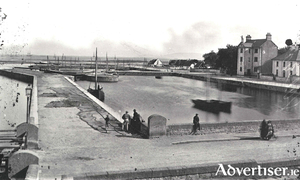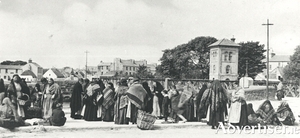Search Results for 'Fishery Tower'
3 results found.
The construction of the Claddagh Basin

On January 1, 1848, Samuel U Roberts was appointed district engineer of the Districts of Lough Corrib. He spent the early part of that year making necessary preparations and arrangements and started navigational works in Galway on March 8, having taken possession of some of the lands required for the Eglinton Canal.
The Fishmarket

The village of the Claddagh was a unique collection of thatched houses arranged in a very random fashion, occupied by a few thousand souls. They had their own customs, spoke mainly in Irish, intermarried each other, had their own code of laws, and elected their own king. He was quite powerful in many respects and usually solved local disputes. Claddagh people rarely went outside the village to courts of justice. Virtually the entire male population was involved in fishing, but when they landed their catch, it was the women who took over. They were the members of the family who went out and sold the product.
The Spanish Arch from Long Walk

Long Walk was originally built as a wall by the Eyre family in order to construct a mud berth. Among those who lived there around the time this photograph was taken were Tom Gannon, Sarah O’Donnellon, Mrs Hosty, and Pateen Green. There was an entry through a large archway into a courtyard known as Green’s Alley and the five houses there were occupied by the Andersons, McDonaghs, Canavans, Gorhams, and Finnertys. A Mrs McDonagh lived next door in a building known as The Hall and further on lived Mrs Lee, John Folan, Bideen Joyce, Ella McDonagh, Mrs Folan, and Mike Walsh.

